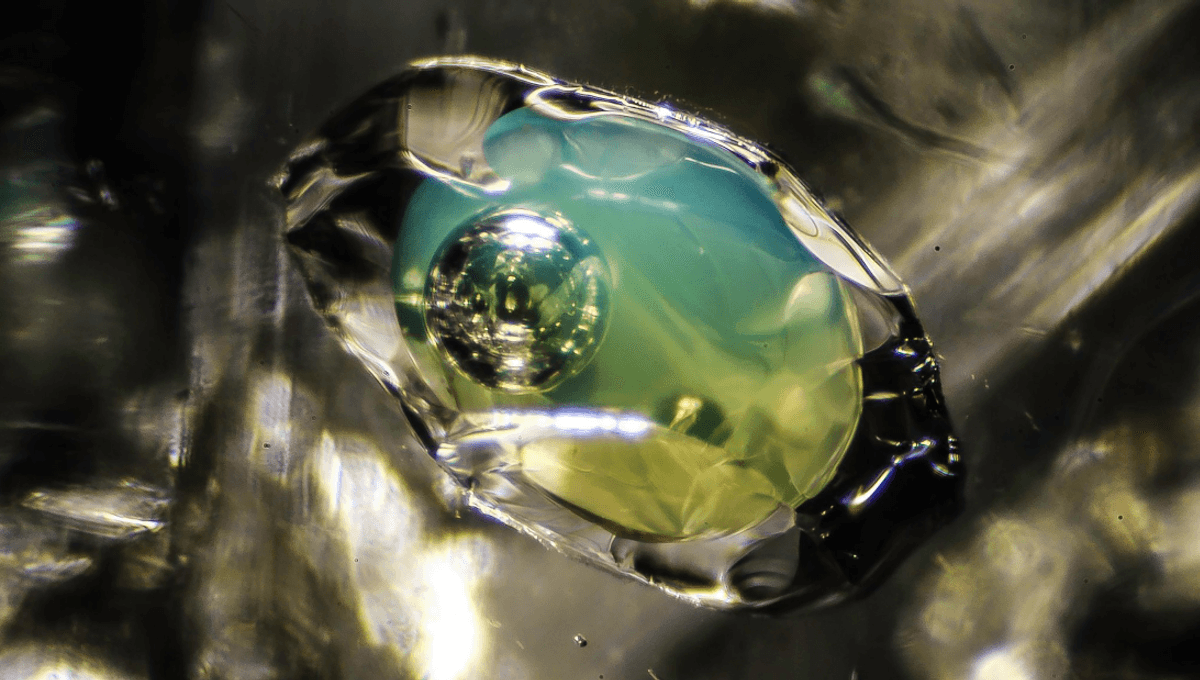
See that strange rock up there? It’s a nifty trick of geology that’s captured three phases of matter, with a solid exterior, liquid middle, and even a gas bubble to boot, all contained within rock crystal quartz. Liquid-filled rocks form when minerals trap fluids, but depending on their composition they can either be classed as enhydros, enhydro agates, or fluid inclusions.
Enhydros
An enhydro is a hollow nodule that contains water, most often made up of chalcedony – a form of silica that consists of hundreds of thousands of tiny quartz crystals. They develop when groundwater rich in silica flows through rock and begins building up layers of quartz. If the developing nodule has a hole in it, it becomes one of those sparkly geodes we humans love so much, but when water gets trapped in the process we get enhydros.
“Everyone is familiar with geodes and we all know that the crystal-lined voids in the center can be several inches in diameter – they could hold a lot of water!” explains Julian Gray of The Georgia Mineral Society. “Mineral dealers who sell true enhydros cut the water-containing geode so that they miss the center of the geode, which would release the water. If you see an [enhydro] it will look like a chalcedony nodule, but if you shake the [enhydro] the water will move around.”
These nodules are porous, meaning water can leak out and leach in, so even if the rock started developing thousands, or even millions of years ago, the water trapped inside might not be so old.
Enhydro agates
Enhydro agates form in a similar way, but the end result is specifically trapped inside agate, which is a variety of chalcedony. It’s somewhat porous and often forms in spaces that were once bubbles in volcanic rock. They can be incredibly old, with some notable examples from Rio Grande do Sol, Brazil, dating back to around 60 to 40 million years ago.
A group of scientists working with the enhydro agates found in Brazil wanted to test if they could contain microorganisms, as the kind of groundwater that gets trapped in these geodes typically has tiny lifeforms in it. They took a powerful drill to the agates until they could tap the fluid inside and test it.
Looking at the ancient water samples beneath a microscope revealed cell-like shapes including diplococcoid, coccobacillus, and bacillus forms, which displayed erratic movement consistent with bacterial motility, rather than being the result of Brownian movement (the random movement of small particles suspended in a fluid).
Fluid inclusions
When crystals grow, they can develop small pits that fill with liquid before getting sealed by a fresh layer of mineral. The liquid may have filled the cavity while it was warmer, but as the crystal cools the liquid can contract, leaving behind a bubble that moves if you tip the crystal in your hands.
The result is a fluid inclusion: a kind of rock-solid coconut inside which there is a juicy center made up of water that can be millions of years old by the time we humans get our hands on it.
“The water in the fluid inclusion is commonly the water that was trapped when the crystal grew,” said Gray. “Some scientists have examples of fluid inclusion dating the early Precambrian. That’s amazing. These Precambrian fluid inclusions may hold water that is over three billion years old!”
It’s perhaps unsurprising, then, that these geochemical time capsules are considered a very useful research tool, even if they aren’t all that uncommon. And if ancient water is your thing, find out what happened when a geologist tasted the oldest water on Earth.
Source Link: Enhydros, Agates, And Fluid Inclusions: The Ancient Rocks With A Juicy Center